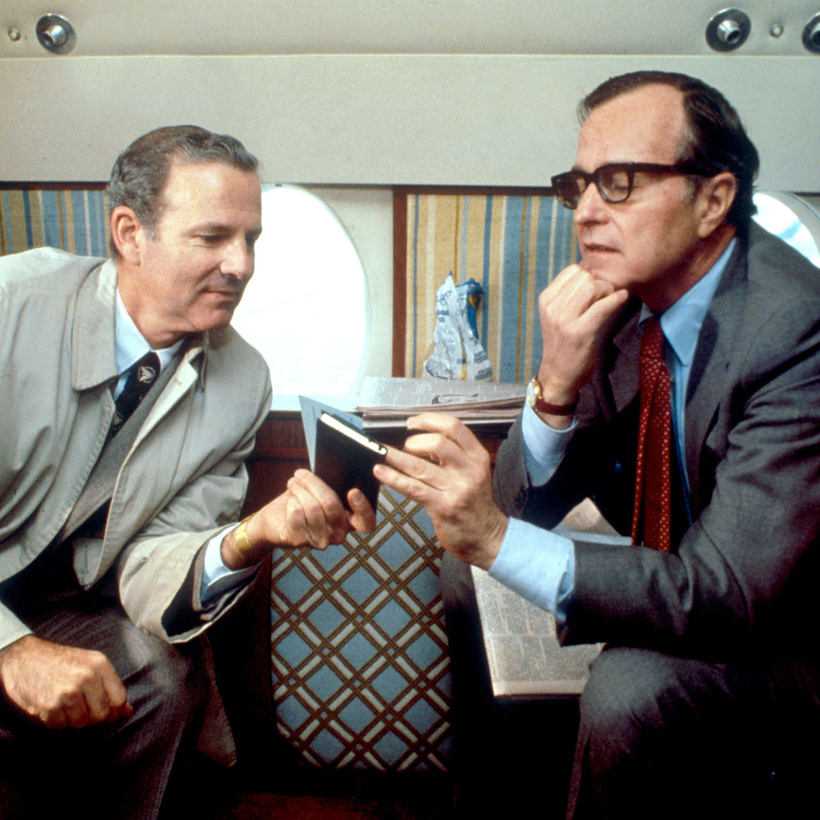As soon as we got into the black Suburban, we knew this was going to be a different kind of tour of Houston. Even in his late 80s, Jim Baker was leaving nothing to chance. The storied former secretary of state had promised to show us the landmarks of his past, the home where he grew up, the country club where he partnered with a scrappy doubles player named George H. W. Bush, and the imposing Victorian mansion where his legendary grandfather, Captain Baker, ruled over his extended clan and many of the city’s early-20th-century institutions.
On his yellow legal pad, Baker had carefully sketched out the route in advance. In fact, it quickly became apparent, Baker had already driven the route to prepare for our visit and was now fussing over the order of our stops to make sure it was just right. Baker had long lectured his eight children and legions of staffers about what he called the “five P’s”: Prior Preparation Prevents Poor Performance. By the time we finished the day at the family gravesite, where he showed us the spot he planned to occupy for eternity, it was clear that Baker had lived what he preached.
The tour was just as illuminating about why Baker had succeeded in so many impossible jobs: he thought everything through and was so confident in his course that we had little choice but to go along for the ride.
The Five P’s in Action
From the end of Watergate through the end of the Cold War, James Addison Baker III flourished at the highest echelons in Washington, running five Republican presidential campaigns while also becoming the gold standard for White House chiefs of staff, the Treasury secretary who made a once unthinkable tax reform happen, and the secretary of state who helped bring a peaceful end to the long struggle with the Soviet Union. In writing his biography, we wanted to tell the story of Washington when it worked as it no longer does and ambitious players such as Baker figured out how to compromise and make deals that stuck, real deals of the world-changing variety.
The risk, we realized, was that Baker might be too good at managing us. He was an unusually skilled steward of his reputation, with an advanced degree in the care and feeding of the Washington press corps. He never let a reporter’s message go unanswered. He gave television correspondents a scoop right before airtime to change a bad story line. He spent Friday afternoons dishing inside details to newsmagazines with himself at the center of the action.
By the time we finished the day at the family gravesite, where he showed us the spot he planned to occupy for eternity, it was clear that Baker had lived what he preached.
But in seven years of research, Baker surprised us with his candor. He never tried to talk us out of any part of his story, negative or not. In his ninth decade, having already written two memoirs of his own, he opened his files to us without restrictions and opened his life too. He even handed us a letter he wrote in 1969 to his friend Bush revealing his first wife’s fatal cancer prognosis, a grim forecast he had not even disclosed to her; it was after her death that Bush enlisted Baker into politics.
As for that tour of Houston, it provided indelible insights about Baker, the most important of which was how close he came to never making it to Washington at all. If not for his wife’s tragic death and his tennis partner’s relentless networking, the subject of our classic American portrait of power might not have executed the most successful midlife career switch ever.
Peter Baker and Susan Glasser’s The Man Who Ran Washington: The Life and Times of James A. Baker III will be published on September 29 by Doubleday

